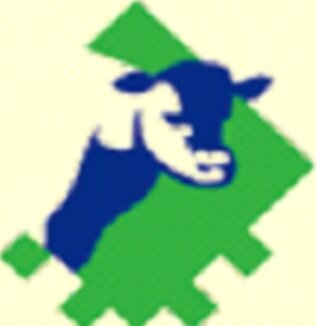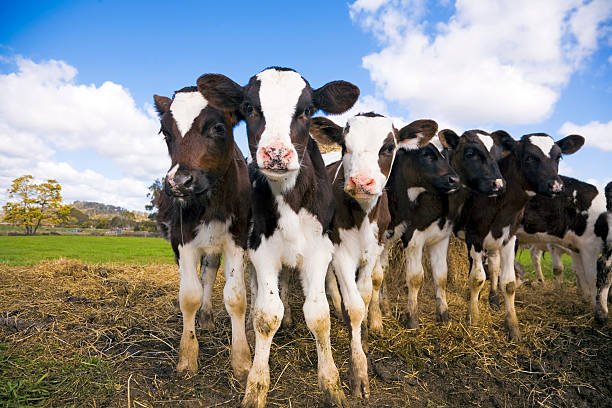Successful autumn calf rearing
Autumn calf rearing
Calf rearing, whether it is in the spring or autumn, can be a busy and stressful time for all involved with many factors to consider.
Autumn calf rearing, while looking similar to spring, requires a slightly different perspective. Autumn generally means the weather is warmer, which can bring its own disease challenges, and calves can typically go outside earlier.
Whether spring or autumn, the principles of successful calf rearing remain the same and depend on
(a) Having a good plan
(b) Timely decision making
(c) Managing the rearing process
(d) Disease prevention and treatment
Having a good plan:
What should a good plan look like? Trouble free calf rearing is a team effort. Involving the whole team in the planning process gives team members a stake in the way things are done and is vital, especially when it comes to dealing with disease issues. Everyone needs to know what they are responsible for, when it needs to be done and why it is important.
A calf rearing plan should focus on.
· Timely herd vaccinations
· Housing
· Colostrum storage and feeding
· Navel care
· Hygiene
· Feeding program
· Predetermining weaning targets
· New arrivals management
· Disease prevention and treatment
· Disease identification
· Sick pen management
It’s a good idea to write the key points of the plan such as hygiene, management of new arrivals, the feeding program, disease prevention, disease identification and treatment and sick pen management on a white board and display in a prominent place at the calf rearing facilities. (Go to the Calf Rearing Plan blog and download the Calf Rearing Template.pdf for more details)
Timely decision making:
Making decisions such as herd vaccinations, housing preparation, developing a feeding and new arrivals management program and implementing those decisions at the right time can make or break a rearing season.
It’s too late once calves start arriving, whether from your own herd or bought in calves’ arriving, to make and implement decisions around the critical issues that should have already been in place.
Managing the rearing process:
Managing the rearing process is all about ensuring a smooth progression from birth to weaned calf.
Everything from how to manage new arrivals to the weaning process needs to be managed carefully.
Critical areas include:
· Supporting the calf’s immune system by ensuring they receive 10% of their bodyweight of quality colostrum within 12 hours from birth in the calf shed environment gives the best immune-boosting start to life.
· A well-planned feeding regime with no sudden changes in milk quantity, milk quality, or time of feeding, adhering to a strict hygiene regime and good housing are the keys to a trouble-free calf rearing season.
· Weaning decisions based on regular weaning and rumen development.
Avoiding the 10-day blues when the passive immunity from colostrum slowly drops off before their own immunity ramps up requires carefully managing of the calves’ environment to avoid any potential dip in weight and for fighting off any infections.
With autumn meaning warmer weather, calf rearing is often looked on to be easier, but warmer weather combined with moist bedding can become a welcoming environment for a rapid build-up of bacteria and increased diseases. Topping up the bedding with dry material along with liberal dosing with disinfectant can keep the bacterial population at manageable levels.
Disease prevention and treatment:
Because dehydration from diarrhoea is the most common cause of deaths and ill thrift in calves, it is vital for all employees to be able to recognise the early signs of dehydration and to treat accordingly to prevent mortality. (Go to the Calf Scours - The Scourge of Every Calf Rearer blog)
Things to be aware of:
· Early treatment with electrolytes will restore fluids and minerals before secondary pathogens take hold.
· Dehydration of up to 5% of a calf’s BW can occur before signs of dehydration are seen.
· Dehydration in excess of 8% requires IV treatment.
· Dehydration over 15% will cause death
Fortunately, if detected and treated early with Oral Rehydration or Oral Nutrition solutions the normal acid-balance of fluids and minerals can be restored before secondary pathogenic (bacterial or viral) infections occur, necessitating expensive veterinary treatment with antibiotics or loss of life.
Diarrhoea is the most common causes of calf deaths and ill thrift in calves. Even if death does not occur, damage done to the villi on the walls of the intestine leaves the calf unable to utilize the food it consumes resulting in a poor calf. The most serious effects occur because of dehydration along with an energy deficit.
Severe dehydration is not difficult to detect. Eyes are sunken, ears are cold, and the calf is depressed and often unable to stand. Even if they don’t die, they take a long time to recover.
However, mild dehydration is the silent enemy. Substantial fluid losses (up to 5% of a calf’s body weight in fluid) can occur within a day of scouring before any signs of dehydration are seen. Rehydration therapy needs to begin at this stage before the dehydration process gathers momentum. Fluid loss in excess of 8% requires IV treatment. Calves suffering from Diarrhoea will die if they lose 15% or more of their body fluids. This is why it is extremely important to monitor calves daily and treat them quickly when signs of illness are observed. (Go to the Determining the degree of Dehydration blog and the Evaluating hydration chart.pdf)
As long as you are proactive with your fluid therapy, 95% of calves will normally recover well from scouring. If the calf goes down and is too weak to suck, there are metabolic disturbances going on in the body. Unless you are going to opt for veterinary IV fluid treatment, the outlook is not good. When an animal reaches 10% dehydration, death is imminent unless IV fluid therapy is started promptly. There is little point prolonging the suffering of a severely dehydrated and scouring calf, and euthanasia may be the only option.
Successfully recognising and treating disease is critical to a calf rearing operation. (Go to the Recognising and Treating Calf Scours blog)
Developing a protocol involving the team to deal with sick calves can go a long way to preventing diseases spiralling out of control. (Go to the Protocol for Dealing with Sick Calves blog and the Dealing with Sick Calves chart.pdf)
More serious viral and bacterial diseases, generally indicated by a temperature reading above 38°C, can take hold if hydration is not corrected early and once identified by a veterinarian need to be treated accordingly. It is important to separate affected calves from healthy calves and to practise strict hygiene practices to prevent the spread of the pathogens.
Download the Successful Autumn Calf Rearing.pdf
BIOCALF Plus Provides energy, nutrients, minerals, probiotics, prebiotic yeast, enzymes and gelling agent Guar gum .
Click here to learn more about Biocalf Plus
BIOCALF Restore. Provides energy, nutrients, and minerals, at a low cost.
SITES OF INTEREST
Antahi Innovations Ltd Antahi Innovations Ltd are a company that specialises in innovative calf rearing solutions
Calf Notes Read the latest international research and information on calf rearing?
Calf Sessions A resource for calf health, nutrition, physiology and management
NZAGBIZ From colostrum management to health and biosecurity, experts from AgResearch and Fonterra discuss all things calf rearing.



